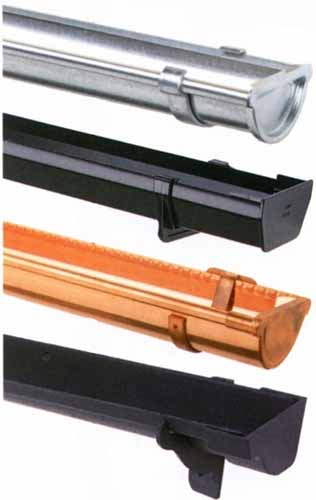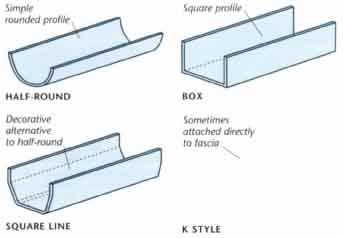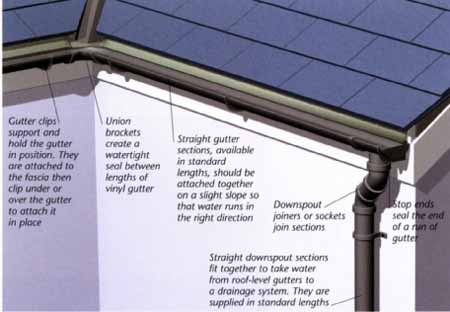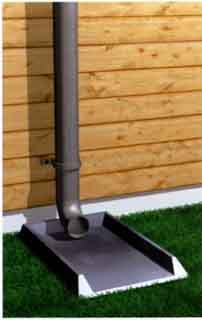Types of Gutters
| HOME | Prev: Repairing Roof Coverings | Next: Preparing to Install Gutters |
|
A correctly installed gutter system will increase the efficiency of water transfer from roof to drainage system. This helps to maintain house structure by eliminating problems often caused by leaking or badly positioned gutters. Gutters do not need to be replaced often. Regularly clear gutters of debris, repair any loose joints as soon as you notice them, and remember that some materials — cast iron, for example — require painting. RECYCLING WATERRainwater is usually directed underground, but it can be recycled. This can be done by collecting it in a rain barrel positioned below a gutter downspout, or with a system of water recycling for use in the household plumbing system. MATERIALSGutters are made from a variety of materials, each with different strengths, appearances, and costs. There may be regulations in historic areas about replacing gutters, so check these if they may apply to you before you buy new gutters. Aluminum: Lightweight. joining systems vary. continuous gutters (without joints) can be made on-site by specialists to suit your requirements. Plastic (vinyl): Lightweight, and easy to work with. Sections clip together. Requires only minimal maintenance. Copper: Durable and easy to install. With time, the bright finish weathers to an attractive verdigris (green patina). Cast iron: Traditional and hardwearing, but extremely heavy. Iron needs to be painted. Sections are joined with mastic, nuts, and bolts. PROFILESMost gutters have a rounded or a squared shape, but several profiles are available (see below). If you are replacing a whole gutter system, your main concerns will be appearance, cost, and ease of installation (if you are planning to do the work yourself). Above: HALF-ROUND; BOX; SQUARE LINE; K STYLE GUTTER SYSTEMSSeveral different sections fit together to drain rainwater quickly and efficiently. Although the method of joining these elements varies depending on the gutter material used, the components are similar. Shown here is a basic vinyl system. Your system may need some or all of the components shown here. Above: LAYOUT OF A GUTTER SYSTEM Gutter clips: support and hold the gutter in position. They are attached to the fascia then clip under or over the gutter to attach it in place. Union brackets: create a watertight seal between lengths of vinyl gutter. Straight gutter sections, available in standard lengths, should be attached together on a slight slope so that water runs in the right direction Straight downspout sections fit together to take water from roof-level gutters to a drainage system. They are supplied in standard lengths. Downspout joiners or sockets join sections. Splash block: Most downspouts empty on to a splash block that directs water away from your foundation. |
| HOME | Prev: Repairing Roof Coverings | Next: Preparing to Install Gutters |



